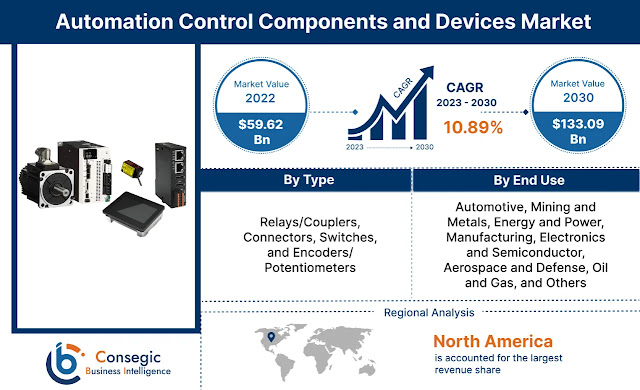Filtration and Separation Equipment Market: Safeguarding Industries, Powering Sustainability
The Filtration and Separation Equipment Market plays a pivotal role across critical industrial and environmental applications. This sector encompasses advanced systems and components that remove impurities from liquids, gases, and solids—ensuring product integrity, process efficiency, and environmental compliance. As industries such as pharmaceuticals, oil & gas, food & beverage, and water treatment face tightening regulations and demand higher throughput, the reliance on filtration and separation technologies continues to grow exponentially.
These systems are not only vital to operational safety and quality assurance but are also central to achieving sustainability goals, particularly in waste minimization, water reuse, and clean energy processes. As production ecosystems evolve globally, filtration is no longer a backend process—it’s a frontline enabler of innovation and regulatory alignment.
2. Market Size and Growth Potential
As of 2024, the global Filtration and Separation Equipment Market is valued at USD 112.14 billion. It is projected to rise to USD 114.92 billion in 2025, reaching a robust USD 156.56 billion by 2032—a compound annual growth rate (CAGR) of 4.3% between 2025 and 2032.
This steady growth reflects widespread adoption across traditional and emerging sectors. From the rise of smart filtration in semiconductor fabrication to the reuse of process water in agriculture and manufacturing, the sector’s trajectory highlights increased investment in clean technologies, advanced materials, and automated systems. Investors and enterprises are viewing filtration not only as a cost center but as a performance and compliance catalyst.
3. Key Market Segments
By Product Type
-
Filters (Cartridge Filters, Bag Filters, Panel Filters, etc.)
-
Centrifuges
-
Membrane Modules
-
Magnetic Separators
-
Cyclones & Hydrocyclones
-
Filter Press
-
Vacuum Belt Filters
By Media Type
-
Liquid Filtration
-
Air & Gas Filtration
-
Solid Filtration
By Technology
-
Mechanical Filtration (Screens, Cartridges, Bags)
-
Membrane Filtration (Microfiltration, Ultrafiltration, Nanofiltration, Reverse Osmosis)
-
Centrifugal Separation
-
Magnetic Separation
-
Gravity Separation
-
Electrostatic Separation
-
Vacuum Filtration
-
Pressure Filtration
By End Use
-
Chemicals
-
Oil & Gas
-
Pharmaceuticals & Biotechnology
-
Food & Beverage
-
Water & Wastewater Treatment
-
Utilities
-
Power Generation
-
Mining
-
Electronics & Semiconductors
-
Pulp & Paper
-
Automotive
-
Aerospace & Defense
-
Others (Textiles, Marine, etc.)
This comprehensive segmentation underscores the market’s diversity and resilience. It enables stakeholders to evaluate opportunities across high-growth verticals like biotechnology, as well as essential legacy industries like mining and power generation. The increasing focus on high-purity processes and emissions control across these segments drives deeper product innovation and lifecycle integration.
4. Key Players in the Market
Alfa Laval AB (Sweden)
MANN+HUMMEL Group (Germany)
Eaton Corporation plc (Ireland)
GEA Group AG (Germany)
Suez Water Technologies & Solutions (France)
HYDAC International GmbH (Germany)
Pentair plc (Ireland)
Porvair Filtration Group (United Kingdom)
SPX Flow, Inc. (USA)
Graver Technologies (USA)
5. Market Trends and Drivers
Several transformative forces are driving evolution in this space:
-
Tightening Environmental Regulations: Compliance with global emission and discharge standards is pushing industries toward advanced filtration systems, particularly in energy, chemicals, and water treatment.
-
Rise in Bioprocessing and Cleanrooms: Growth in biologics, semiconductors, and precision manufacturing fuels demand for ultra-fine particulate separation.
-
Smart and Automated Filtration: Integration of IoT and sensor-driven systems is enabling predictive maintenance and real-time monitoring, optimizing filter lifecycle and efficiency.
-
Circular Economy Integration: Increasing adoption of water and waste reuse processes is pushing innovation in membrane technology and modular filtration setups.
These trends signal a strategic pivot from cost containment to performance optimization, as filtration systems become more embedded in quality, sustainability, and digital infrastructure goals.
6. Regional Insights
Asia Pacific
This region dominates global growth due to its expansive manufacturing base, rising urbanization, and infrastructure upgrades. Countries like China, India, and Vietnam are investing heavily in industrial wastewater treatment and clean production, driving large-scale adoption.
North America
Mature and innovation-driven, North America leads in R&D and deployment of smart, automated, and specialized filtration solutions—especially in biotechnology, aerospace, and energy sectors.
Europe
With its strong regulatory framework and green tech incentives, Europe is advancing the use of high-efficiency filtration in food processing, pharmaceuticals, and renewable energy projects.
Latin America & Middle East and Africa
These regions are emerging as key markets due to growing awareness around water scarcity, industrial pollution, and the need for reliable resource management—prompting investment in scalable filtration systems.
7. Forecast and Outlook
From 2025 through 2032, the filtration and separation market is poised to become even more integral to sustainability and operational excellence strategies. Modular systems, digital control layers, and eco-friendly filtration materials will lead the next generation of products. As data-driven manufacturing and regulatory accountability become universal, filtration will evolve from a compliance function to a core enabler of competitive advantage.
8. Conclusion
The Filtration and Separation Equipment Market stands at the crossroads of regulatory compliance, environmental stewardship, and industrial innovation. As industries across the globe strive for cleaner processes, higher purity, and sustainable growth, this market will remain indispensable. Businesses and investors should monitor this space closely—it’s not just about filtering contaminants, but filtering for the future.




Comments
Post a Comment